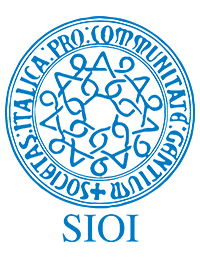From global think tanks
The analyses published here do not necessarily reflect the strategic thinking of The Global Eye
Today’s about: India-Pakistan; Libya; Pope Leo XIV; Syria; US-Canada; US-North Korea; US-UK
India – Pakistan
(Soufan Center) Tensions are escalating between India and Pakistan, nuclear-armed neighbors on the Indian subcontinent, which have fought four separate wars since 1947. In retaliation for the recent LeT attack, India launched Operation Sindoor on May 7, marking the country’s most extensive military action since the 2019 Balakot airstrikes and before that, the 2016 surgical strikes along the Line of Control, the de facto border dividing the disputed Jammu and Kashmir region between India and Pakistan. Driven by a commitment to save face on either side, India is asserting escalation dominance by responding aggressively to Pakistan’s drone and missile retaliation; targeting air defenses may signal capabilities to escalate further. With both India and Pakistan boxed in by domestic political imperatives and no international actor stepping in to mediate, the risk of miscalculation—and a wider war—has never been higher. – Two Nuclear-Armed Rivals on the Brink in South Asia – The Soufan Center
Libya
(Ben Fishman – Washington Institute for Near East Policy) Libya is at its lowest point since 2020, when a ceasefire ended the civil war between the UN-recognised government in the west and eastern forces led by Khalifa Haftar. Since then, a series of UN and internationally-backed efforts failed to produce national elections or a unity government, enabling Haftar and Prime Minister Abdul Hamid Dbeibeh to remain in power with no intention of leaving. Both have pledged to cede power to a new transitional government. However, neither appears intent on yielding their status quo privileges. Those include using state assets to enhance their families’ wealth and to distribute it to their allies. – Libya Is At Its Lowest Point Since 2020 | The Washington Institute
Pope Leo XIV
(Martin Cassinelli – Atlantic Council) As global headlines celebrate the election of Pope Leo XIV—Robert Francis Prevost—as the first American pope, another nation three thousand miles south of the United States loudly claims him as one of its own. Though born in Chicago, Pope Leo XIV spent over two decades living and working in Peru and became a dual US and Peruvian citizen in 2015, forging a personal and spiritual bond with the Andean country that remains little known to the wider world. His identity as a dual citizen could be a defining characteristic of his papacy and, if channeled in his work, could shape US–Latin American relations. – The new pope is American. He is also Peruvian. Why does it matter? – Atlantic Council
Syria
(Samer al-Ahmed – Middle East Institute) On March 10, 2025, Ahmed al-Sharaa, the president of Syria, and Mazloum Abdi, the commander-in-chief of the Syrian Democratic Forces (SDF), signed a historic agreement, ending a long-running divide between Damascus and the Democratic Autonomous Administration of North and East Syria (DAANES). The agreement stipulated the integration of SDF military and civilian structures into Syrian state institutions, constitutionally guaranteed rights for all groups, established a comprehensive cease-fire, and unified efforts to fight the remnants of Bashar al-Assad’s regime. The agreement was welcomed by many as a significant step toward national unity, amid cautious international support. Even Turkey, historically opposed to the SDF, expressed cautious optimism, as the agreement, if implemented, would help stabilize Syria, even as Ankara reiterated its demands for the disarmament of the Kurdish People’s Protection Units (YPG), a key component of the SDF. Now, two months after the agreement was signed, how far has it progressed, and what are the main obstacles and disputes between the parties during this transitional phase? – The Damascus-SDF agreement two months on: Fragile progress or delayed collapse? | Middle East Institute
US – Canada
(Christopher Hernandez-Roy, Christopher Sands – Center for Strategic & International Studies) As in any great sports rivalry, trash talking and posturing preceded the first meeting of Canadian Prime Minister Mark Carney and U.S. President Donald Trump on May 6. At the first encounter the two teams showed off their strengths but were remarkably disciplined. Both sides knew that this was the start of a playoff series and took the measure of the other seriously. Despite Trump’s denials, Canada produces a lot that the United States needs, from oil, critical minerals, and fertilizers to manufactured goods, software, and services. Canada’s geography is even more strategically important to the United States than either Greenland or Panama—and it is more secure, a fact often forgotten amid debates about low Canadian security spending. – Game On for the United States and Canada After Oval Office Opener
US – North Korea
(Frank Aum, Ankit Panda – Carnegie Endowment for International Peace) It is now clear that applying pressure does not lead to North Korean restraint; rather, it fuels North Korean provocations. The United States and its allies should instead seek stable coexistence with Pyongyang as an overarching goal. – Pursuing Stable Coexistence: A Reorientation of U.S. Policy Toward North Korea | Carnegie Endowment for International Peace
US – UK
(Inu Manak – Council on Foreign Relations) The United Kingdom secured the first trade deal with the Donald Trump administration this week, setting a possible template for other nations. While it’s not a full-fledged agreement, it addresses President Trump’s recent tariff hikes, sets priorities for cooperation, and lays the groundwork for future discussions on a range of issues. The agreement’s five pages of text are minuscule compared to the phonebook size of most trade deals, which likely means the announcement’s immediate economic effect will be similarly small. But trade deals are not just about economics. They are also a tool that can shape the system of rules by which two or more countries engage with each other—and the rest of the world. This is exactly where this new deal gets interesting, so let’s break down the major takeaways. – U.S.-UK Trade Deal Illustrates Trump’s Shifting Trade Policy | Council on Foreign Relations



